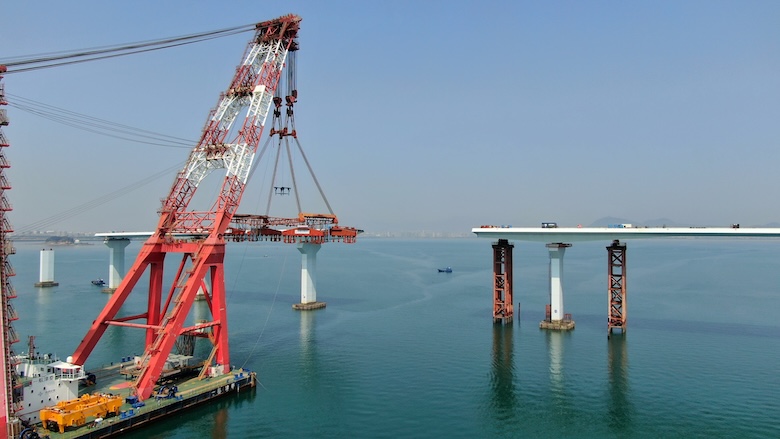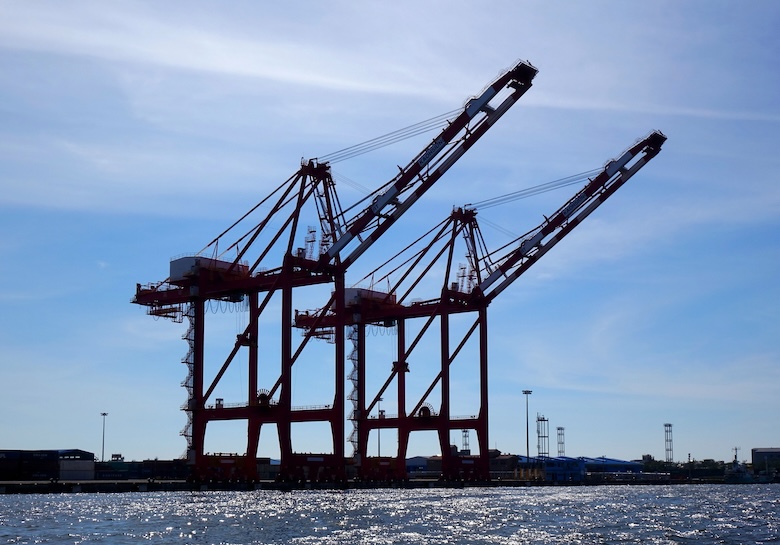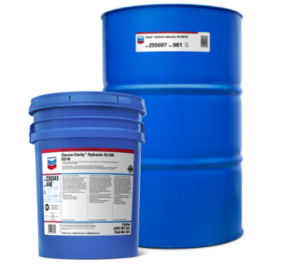A closer look at Chevron’s Bio EliteSyn AW biodegradable hydraulic fluid.

Concern continues rising over stern tube leakages and operational discharges that were once considered part of normal operation in marine vessels. A popular 2010 study estimated that marine shipping vessels leak 4.6 to 28.6 million liters of lubricating oil from stern tubes annually and introduce 32.3 million liters from other discharges and leaks.1
As a solution, environmentally acceptable lubricants (EALs) are designed to minimize the harm that discharges or leaks can cause to wildlife and the environment. These lubricants meet specific environmental performance standards, such as biodegradability, non-toxicity, and low bioaccumulation potential. EALs are commonly used in industries operating in ecologically sensitive areas, including marine, agriculture, forestry, and construction, where lubricants can come into direct contact with the environment.
Organizations, including the U.S. Environmental Protection Agency (EPA), European Union Ecolabel, and International Maritime Organization (IMO), set regulatory requirements and guidelines for such fluids. One relatively recent update includes the EPA’s Vessel Incidental Discharge Act (VIDA), which aims to reduce the environmental impacts of normal operational discharges from regulated vessels. Final requirements and details are underway, but the maritime industry is seeking solutions now that meet performance requirements.

While EALs have significant environmental benefits, they also present performance challenges, higher costs, and compatibility issues compared to traditional mineral-based lubricants. Oxidation is an important consideration, as biodegradable fluids are inherently more susceptible to oxidation than conventional mineral oils, leading to faster degradation. Thermal stability is also a concern, as EALs can break down faster when exposed to high temperatures and extreme heat or cold.
Thus, as regulations and markets push for more sustainable solutions that minimize harm, manufacturers are researching and developing more hydraulic fluid solutions that meet environmental and operational requirements. For instance, Chevron added a new biodegradable hydraulic fluid called Clarity Bio EliteSyn AW to meet the evolving needs of the marine and construction industries in alignment with environmental regulations. The lubricant meets or exceeds government regulations for biodegradation, toxicity, and bioaccumulation limits, and it has a high level of renewable carbon of ≥ 90%.
The fluid underwent extensive testing, including the Turbine Oil Oxidation Stability Test (TOST), against synthetic and zinc-based hydraulic fluid and other EALs and biodegradable products on the market. The results showed that Clarity Bio EliteSyn AW achieved a TOST life of 10,000 hr, separated entrained air in 2.18 min, and had a total water acidity of 3.37 mg/KOH, performing better than its counterparts. The fluid withstands oxidation during high-temperature operation and resists water contamination, improving efficiency, reducing potential system and equipment damage, and improving productivity.

“Clarity Bio EliteSyn AW performs impressively across a range of demanding applications. The product performs exceptionally well in mobile hydraulic systems, bringing everything of a traditional product but with added elements of efficiency and productivity with the benefit of being bio-based and biodegradable. It even handles high-demanding operations at pressures exceeding 5,000 psi, making it a top choice for operators looking for reliability under tough conditions,” said Zach Sutton, Lubricants Industrial and Services Specialist at Chevron. “The unique formulation also makes it ideal for servovalves, systems using multi-metal components, and where precision is critical. The compatibility and consistent performance of Clarity Bio EliteSyn AW in these settings help achieve smooth operations without compromising on protection or durability and make converting over easy. And finally, in marine hydraulic equipment applications that require specialized solutions, Clarity Bio EliteSyn AW has been able to meet these unique challenges head-on. Its performance in harsh marine environments reinforces its versatility and reliability across industries.”
The new product provides seal compatibility so customers can transition easily without changing equipment seals. This compatibility advantage helps simplify the adoption process, reducing downtime and operational disruptions. The fluid also exhibits low toxicity to wildlife, making it desirable for applications near water or areas with potential wildlife impact. It complies with the EU Ecolabel, EPA Vessel General Permit (VGP), Swedish Standard for EALs, and the Organization of Economic Cooperation and Development (OECD) definition of “readily biodegradable” in which a majority will break down within 28 days.
The Clarity Bio EliteSyn AW is formulated from a 100% renewable, bio-based synthetic base oil that delivers all the performance of a conventional mineral-based lubricant and is available in ISO grades 32, 46, and 68.
Chevron Lubricants
chevronlubricants.com
1Etkin, D.S. 2010. Worldwide analysis of in-port vessel operational lubricant discharges and leaks. Proc. 33rd Arctic and Marine Oilspill Program Technical Seminar: p. 529-554.
Filed Under: Components Oil Coolers, Featured, Fluids, Sealing & Contamination Control Tips, Technologies, Trending